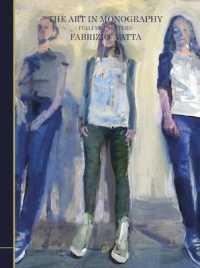- ホーム
- > 洋書
- > 英文書
- > Science / Mathematics
Full Description
In the past 15 to 20 years, the computer has become a popular tool for exploring the relationship between a measured response and factors thought to affect the response. In many cases, scientific theories exist that implicitly relate the response to the factors by means of systems of mathematical equations. There also exist numerical methods for accurately solving such equations and appropriate computer hardware and software to implement these methods. In many engineering applications, for example, the relationship is described by a dynamical system and the numerical method is a finite element code. In such situations, these numerical methods allow one to produce computer code that can generate the response corresponding to any given set of values of the factors. This allows one to conduct an "experiment" (called a "computer experiment") to explore the relationship between the response and the factors using the code. Indeed, in some cases computer experimentation is feasible when a properly designed physical experiment (the gold standard for establishing cause and effect) is impossible. For example, the number of input variables may be too large to consider performing a physical experiment or it may simply be economically prohibitive to run an experiment on the scale required to gather sufficient information to answer a particular research question. This book describes methods for designing and analyzing experiments conducted using computer code in lieu of a physical experiment. It discusses how to select the values of the factors at which to run the code (the design of the computer experiment) in light of the research objectives of the experimenter. It also provides techniques for analyzing the resulting data so as to achieve these research goals.
Contents
1 Physical Experiments and Computer Experiments.- 2 Preliminaries.- 3 Predicting Output from Computer Experiments.- 4 Additional Topics in Prediction Methodology.- 5 Space-Filling Designs for Computer Experiments.- 6 Some Criterion-based Experimental Designs.- 7 Sensitivity Analysis, Validation, and Other Issues.- A List of Notation.- A.1 Abbreviations.- A.2 Symbols.- B Mathematical Facts.- B.1 The Multivariate Normal Distribution.- B.3 Some Results from Matrix Algebra.- C PErK: Parametric Empirical Kriging.- C.1 Introduction.- C.2 PErK Job File Options and Output.- C.3 Examples.- References.- Author Index.








